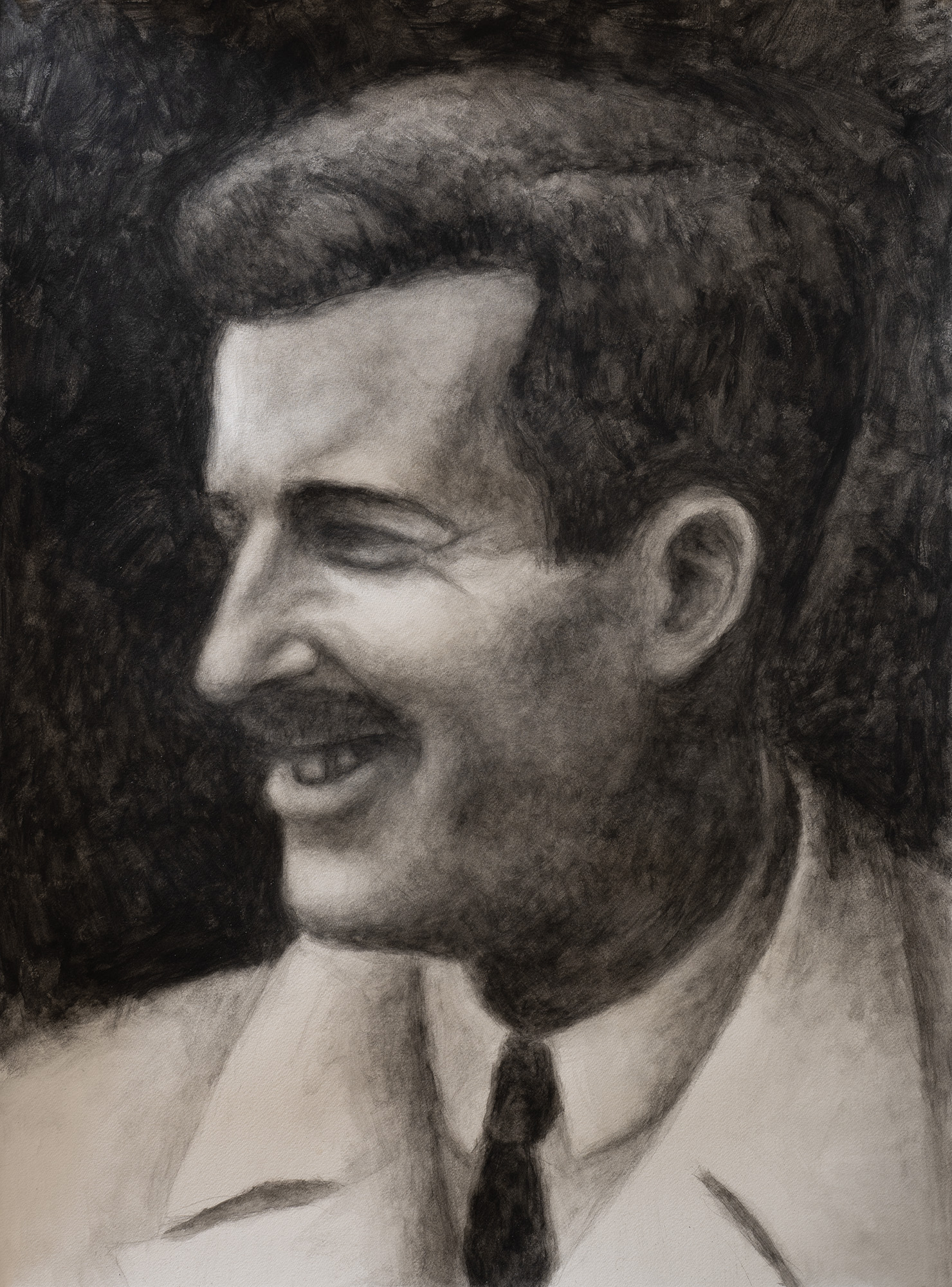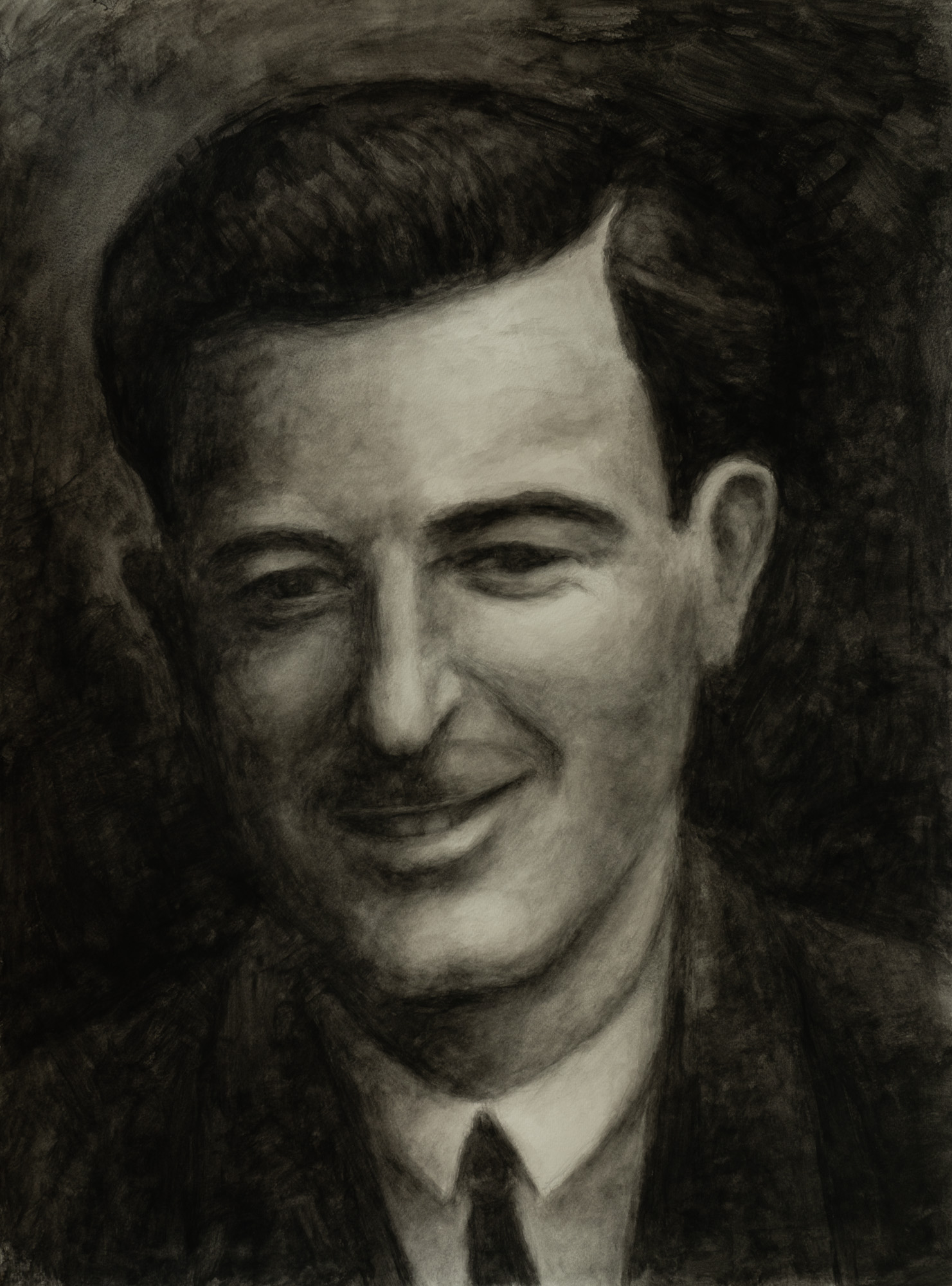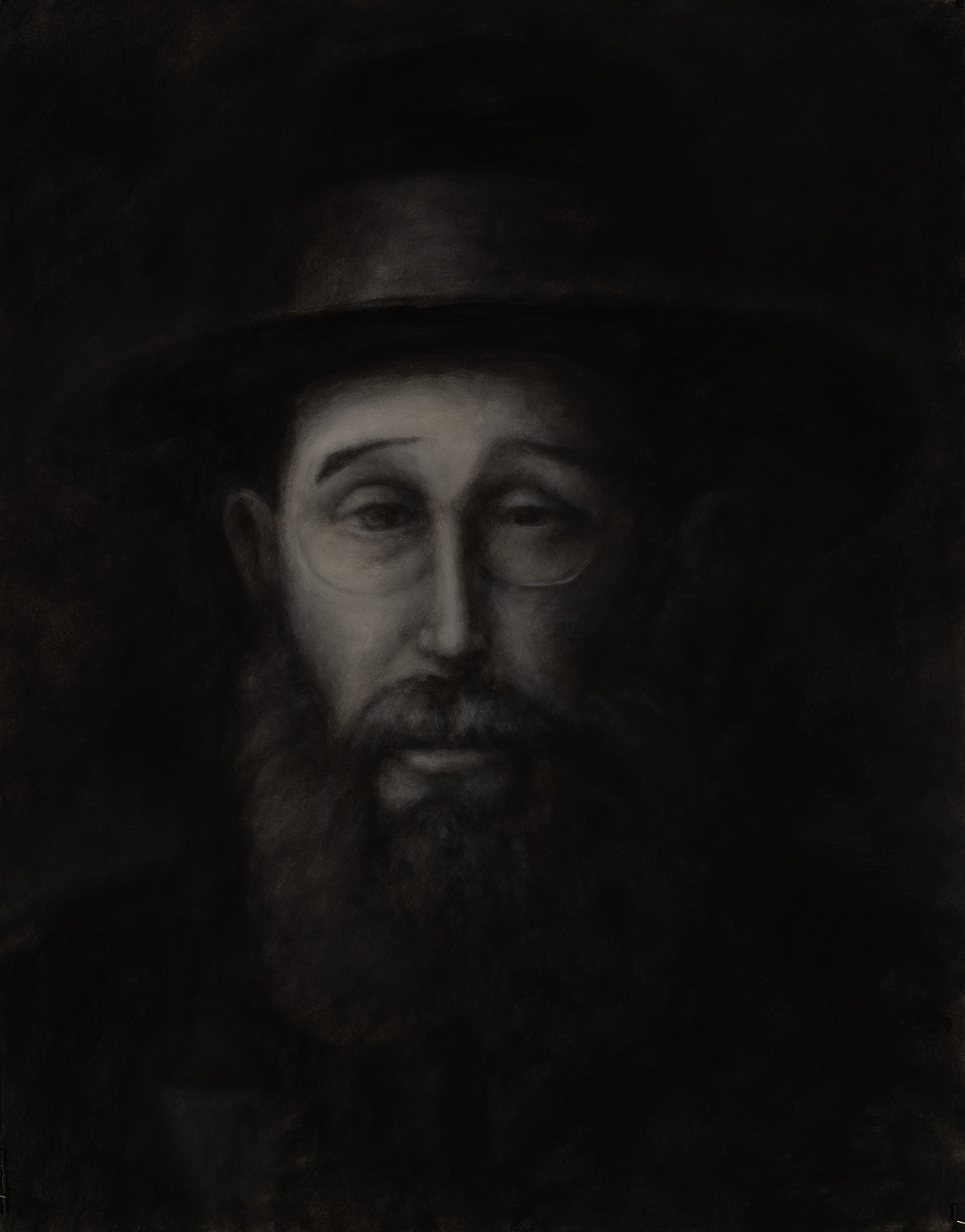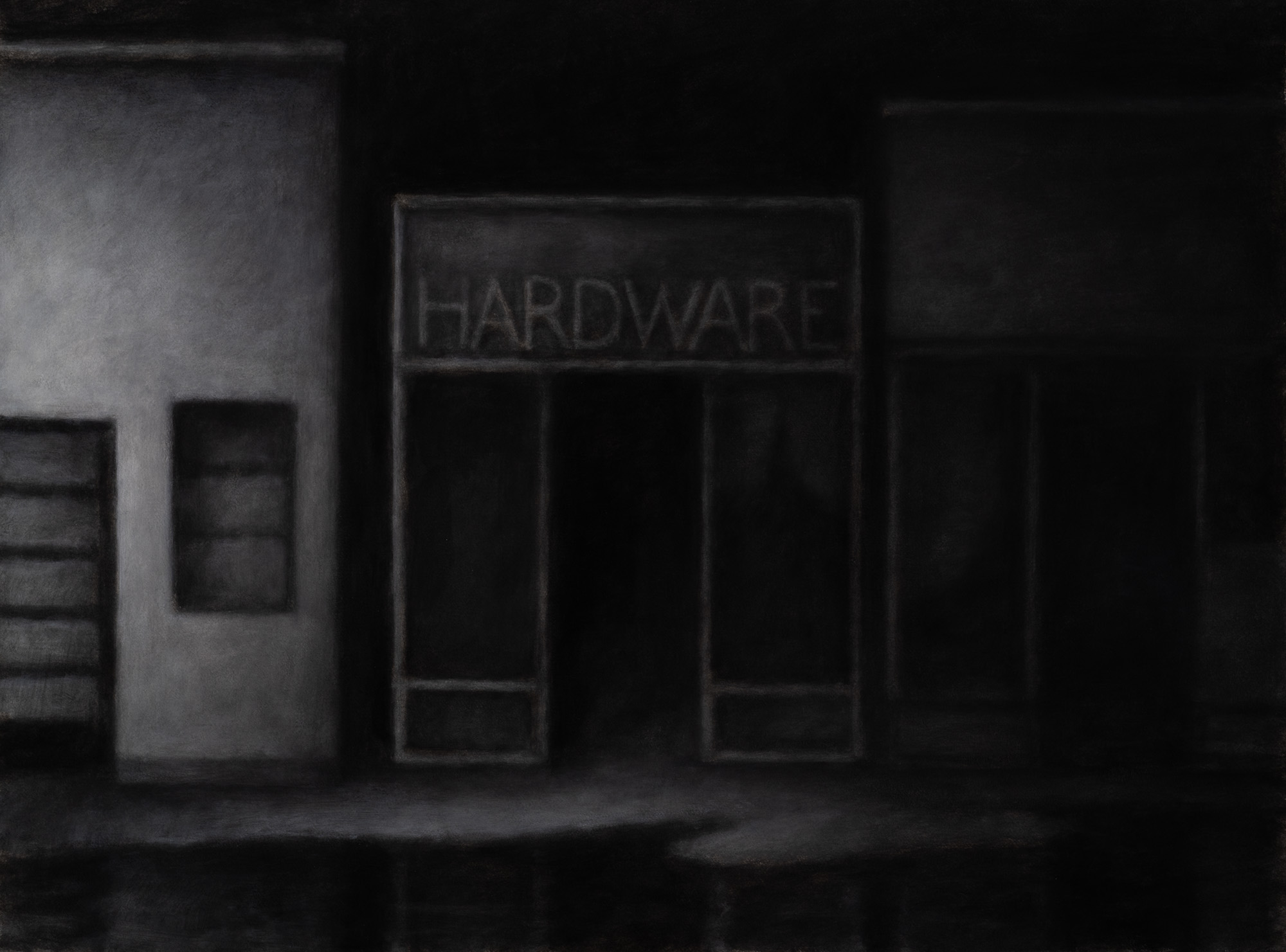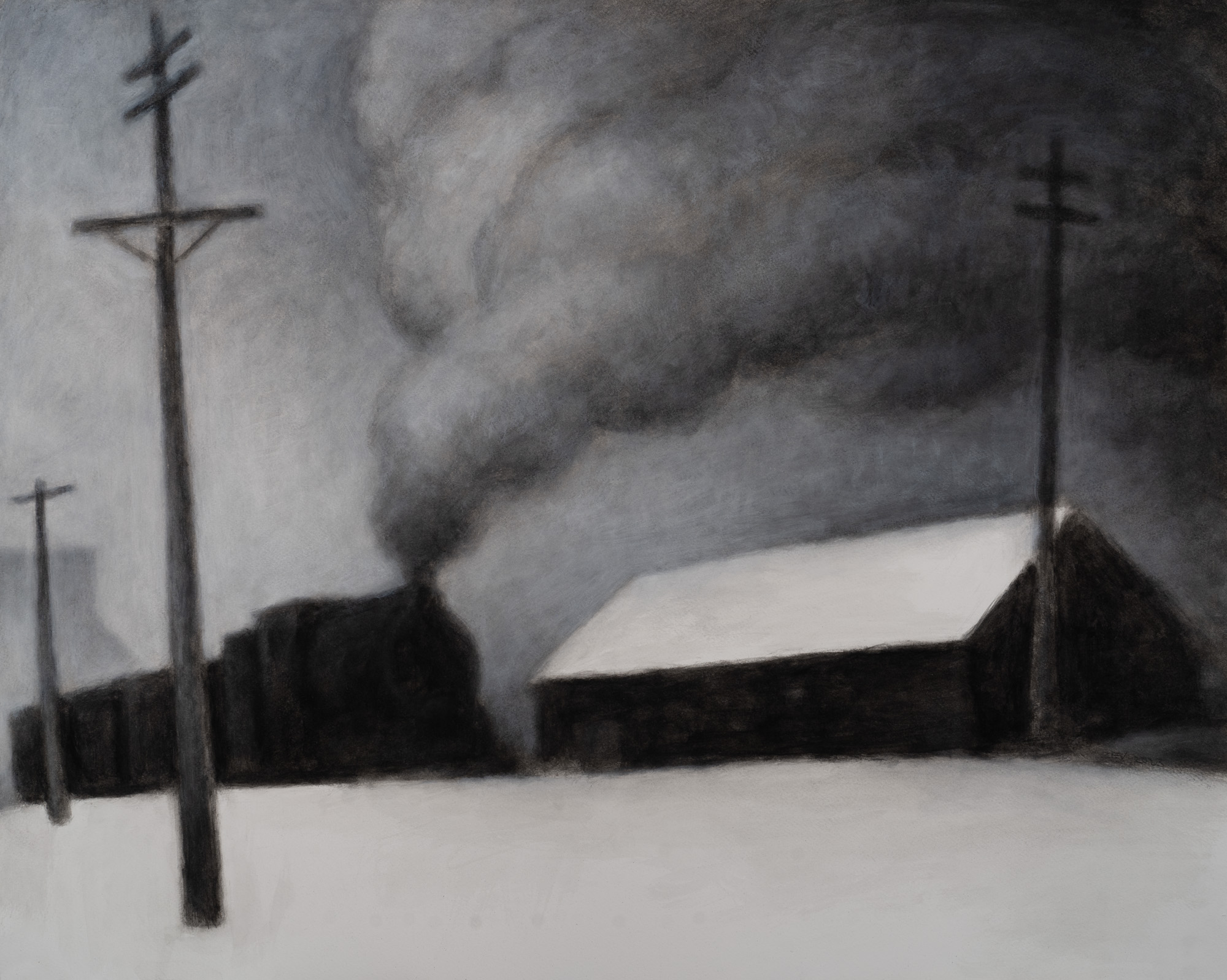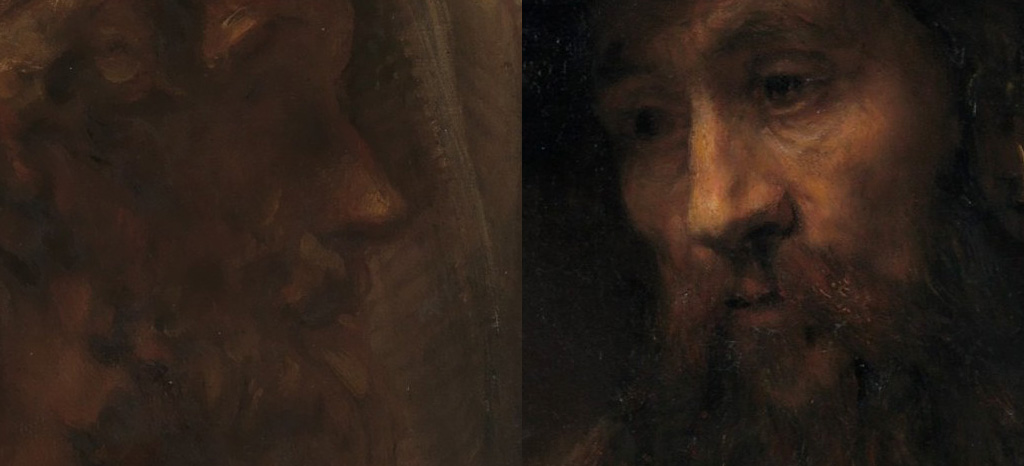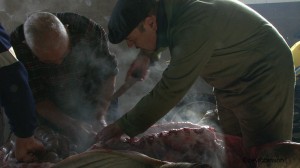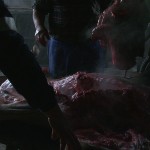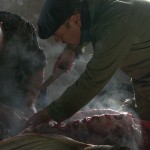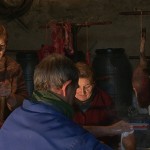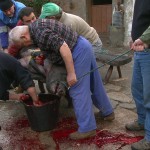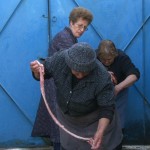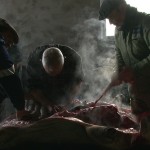He sits there lifesize or perhaps larger-than-life, still frozen almost 50 years later, with the vacant stare of a witness struck dumb and nothing at all like the numerous small reproductions seen so often in books and magazines. Don McCullin shot five single frames, each identical, of the US Marine in Vietnam. He didn’t blink and he didn’t move. He became, like Kurt Vonnegut’s Billy Pilgrim in Slaughterhouse-Five, “unstuck in time.”
“Kurt Vonnegut was present during the firebombing of Dresden in February 1945,” says the text on the wall, “when tens of thousands of its inhabitants were killed. He was locked in the underground meat locker of a slaughterhouse as a prisoner of war, and emerged the morning after the air raid to find what he called ‘possibly the world’s most beautiful city’ completely destroyed. Twenty-four years later he finally published Slaughterhouse-Five, where he wrote: ‘People aren’t supposed to look back.’ ”
Outside, the same boat that took Churchill’s body to his funeral half a century earlier moved slowly up the Thames past the Tate as part of a day of commemorations that looked back at the Prime Minister who led the nation in its darkest hour and who was also directly or indirectly responsible for the Dresden area bombings which targeted the whole city, not just military and industrial targets. He had his role in the creation of Slaughterhouse-Five which in turn was curator Simon Baker’s inspiration for the “Conflict, Time, Photography” exhibition at the Tate Modern, and now the boat moves slowly by outside.
Inside the Tate are photographs by Nick Waplington of wall drawings done by German prisoners of war at the Island Farm camp in South Wales. Some of the prisoners, perhaps those who did those drawings, were generals and high-ranking SS officers who were to be tried at Nuremberg and at least two of whom were executed. Old age and disease must have taken the rest by now and most of the camp itself was destroyed the year after Waplington’s visit in 1993.
Outside the Tate, three days before the Churchill commemoration, the BBC covered the services of survivors revisiting Auschwitz on the seventieth anniversary of its liberation. We must look back, we must never forget.
For many Holocaust survivors, the prisoners at the Island Fire camp were monsters, yet the drawings they left behind suggest simple human sensibilities and desires. For some, that may be more unpleasant and difficult to see than any photograph of the dead. One or two of the prisoners may have become artists themselves under different circumstances, perhaps even with an original painting in the Tate. But circumstances were not different.
Steven Shore visited Holocaust survivors in the Ukraine and his photographs, too, are oddly unstuck in time. A man, presumably a survivor, is smiling, his jacket displaying an array of medals. A woman, perhaps his wife or another survivor, is also smiling. The rest are photos of interiors and objects, many of the retro-cool Soviet-era kind and, like the smiles, seemingly at odds with the gravity of the subject matter. Had the survivor finally found that, in Vonnegut’s words, “Everything was beautiful and nothing hurt”? Was there no trace of the Holocaust left, did he no longer look back? Were those medals for his part in fighting with the Resistance or the Soviet Army, his own purging, his own Slaughterhouse-Five? The display is a strange, disjunct, and uneasy narrative, as any act of looking back must be.
The sites of conflicts are revisited by the photographer minutes, years or decades later, and the exhibition is laid out chronologically according to time elapsed, but for us it is years and decades after the fact. One minute we are viewing the latest in shells and bombs, and shells of buildings in Iraq and Afghanistan, the next, Roger Fenton’s cannonball-strewn road in the 19th century Crimean War, then more shells of buildings in France, Vietnam, Japan, Germany, Africa, the Americas, as the exhibition itself becomes unstuck in time. Each landscape leads the viewer into the next in one long destructive rampage in time and space with only a change of armaments and fortifications, and each says, “There was some killing done here.”
It is everywhere and always, captured in any and every photograph. An Ansel Adams landscape revisits the death of millions of native North Americans, the ghosts of dead slaves populate William Eggleston’s suburbs of the South, and a postcard of the Tower of London is the scene of torture, beheadings and heads displayed on pikes. A photograph can hide so much.
Time only stops with the bombings of Hiroshima and Nagasaki, as if all the explosions from all the other wars fused together as one in order to destroy existence itself, condensing time the way a black hole compresses matter. The watch stopped at that very moment in Shomei Tomatsu’s “11:02 Nagasaki” series where there are the city has “two times. There was 11.02, August 9, 1945. And there is all the time since then. We must not forget either of them.”
Tomatsu’s “11:02 Nagasaki” also includes the faces of survivors with keloid scarring, a once pretty young woman whose looks were burned off her face, about to be married or perhaps waiting for her husband soldier to come home safe and sound, those who had to look at her scarred face and those who would look away, and those who suffered and suffer still the deforming effects of radiation. How much of this can a mere photograph reveal.
Ninety-nine years after the start of World War 1, Chloe Dewes Mathews returned to photograph landscapes, as tranquil and conflicted as any landscape, showing the exact places where British, French and Belgian soldiers on the Western Front were executed for cowardice and desertion. Many of those soldiers were just a previous incarnation of McCullin’s eternally frozen, shell-shocked soldier. Mathews’ photographs are like a single flower at their graves, a small reminder of the ultimate injustice they endured after going to war in the service of others, then for suffering its effects in the service of others. “This is the thanks I get,” they thought, standing before the firing squad. Churchill, whose boat continued upstream a century later, was an officer on the Western Front.
Eighty-four years later McCullin photographed the Somme Battlefield of World War I, the scene of endless massacres and shell-shocked soldiers and executions, and the wall text says that it, “shows a landscape that still seems haunted by the carnage of battle…that emphasises the sense of absence and loss.” All of McCullin’s photographs, of peaceful landscapes, of death and destruction, of everyday English life, are haunted, by history and by ghosts. It is his ability to evoke ghosts that makes him so extraordinary; some photographs can reveal so much.
Today, McCullin focuses on the English landscape trying to purge his own past, but says that the sound of a hunter’s shotgun blast in the distance brings it all back, that a reminder of what he used to do is always present. In a world where we must remember, Don McCullin saw too much of what no one should have to see, and now photographs the solace of Somerset in a desperate attempt to forget.
Hrair Sarkissian photographed archives in Istanbul libraries that may or may not contain information about the genocide of the Armenian population in the Ottoman Empire which caused his family to flee to Syria. “Conflict, Time, Photography” itself is not unlike those libraries that may or may not hold vital clues to our existence should we open them. But once the exhibition is finished, the photographs will return to the shelves and dark vaults, witnesses unstuck in time, and lie there, waiting.
“Conflict, Time, Photography” continues at the Tate Modern, London, until March 15.
The documentary “McCullin” is available on DVD. http://www.amazon.co.uk/McCullin-DVD-Don/dp/B00AIUSG4Y

